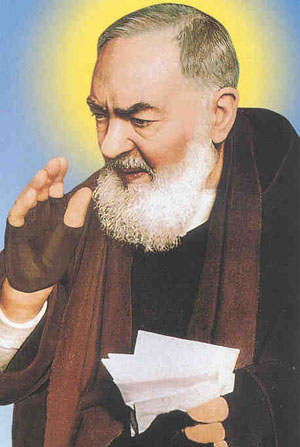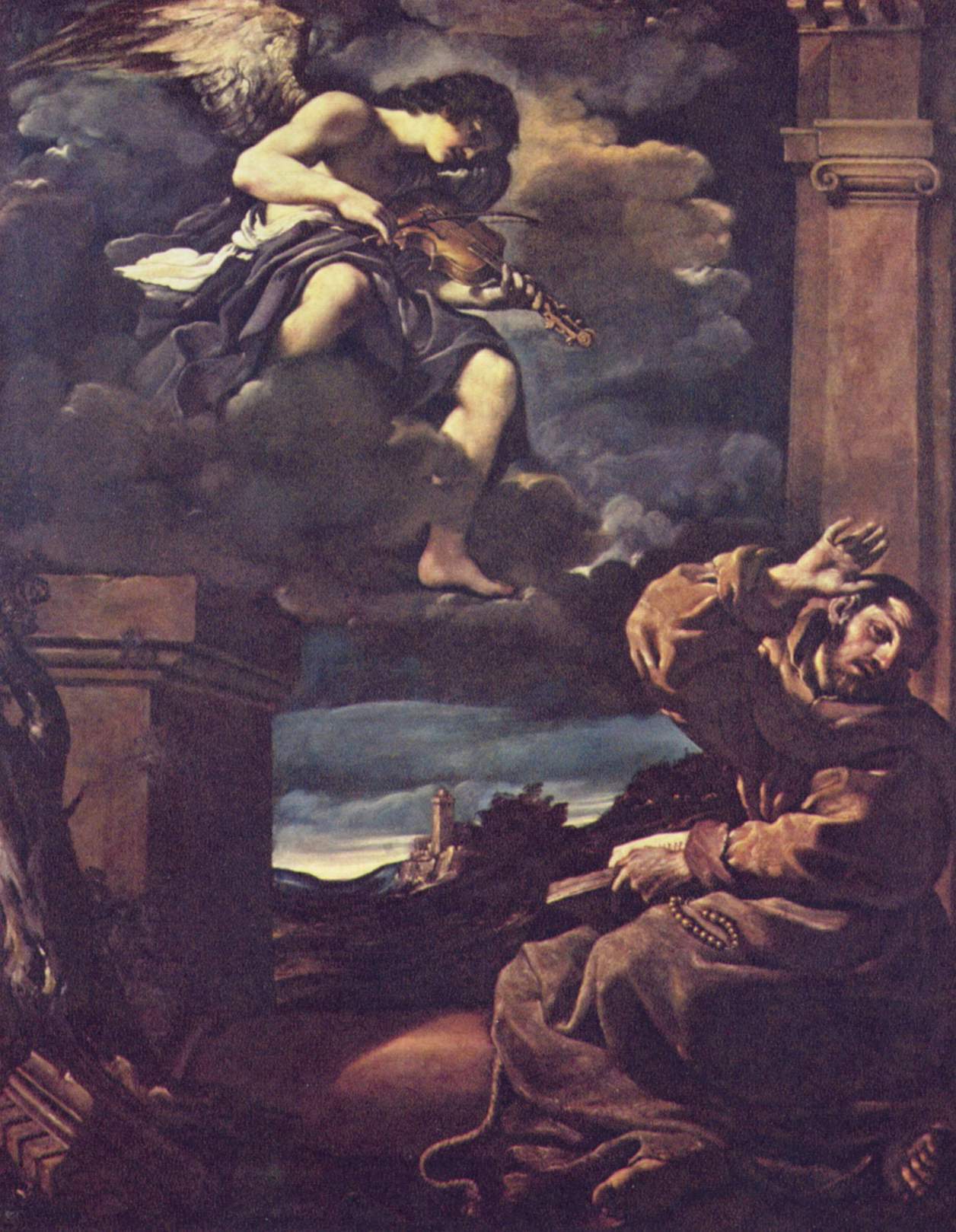
Hawkins / Heiligkeit
Inhaltsverzeichnis: (verbergen)

Echte Stigmata sind körperliche Merkmale, welche mit den fünf Wundmalen Jesu korrelieren.
Es sind ausnehmend fromme Menschen, bei denen die Wundmale des Gekreuzigten erschei-
nen. Stigmata drücken eine Geisteshaltung aus, die kulturelle und individuelle religiöse Über-
zeugungen detailgetreu ins eigene Mikroumfeld überträgt. Blutende Stigmatawunden stellen
keine Gesundheitsgefährdung dar, sind immun gegen Infektionen und widerstehen der Heilung.
Der Prediger und Sozialreformer Franz von Assisi (1181/82-1226) war der Gründer des Fran-
ziskanischen Ordens, in dem er als Ordensbruder diente. Der italienische katholische Heilige identifizierte sich so sehr mit den Schmerzen des gekreuzigten Jesus, dass er im Jahr 1224 als erste bekannte Persönlichkeit, die christlichem Wundmale am eigenen Körper aufwies. Seit die-
sem Erstereignis gab es etwa 400 Fälle von forschungswürdiger Stigmatisation, 100 davon allein im 20. Jahrhundert. [Status 2013]
|
|
|
| Schriftliche Referenzen: ► Artikel »Sie halten sich nicht für Christus, fühlen aber wie er«, präsentiert von dem Magazin der deutschen Tageszeitung Süddeutsche Zeitung, Malte Herwig, Heft 13/2012, republiziert 4. April 2013 ► Hausarbeit Die Stigmatisation des heiligen Franziskus im Fresko der Oberkirche in Assisi. Eine Untersuchung der Neuerungen in der Darstellungsweise der Stigmatisation des heiligen Franziskus im 13.-14. Jahrhundert, präsentiert von dem Institut für Kunst- und Bildgeschichte, Humboldt-Universität, Berlin, 2015 |
| See also: ► Stigmata |
Personal avowals

Alban Butler (1710-1773) English Roman Catholic priest, hagiographer, The Lives of the Fathers, Martyrs and Other Principal Saints, four volumes (resulted from thirty years of study), London, 1756-1759, Kessinger Publishing, 26. May 2006

Persönliches Bekenntnis
Appell
Schlussfolgerung – Das abhandengekommene Heilige
|
Gedicht
Devotional avowals addressed to God
Featuring Armstrong's seven years in the convent and her spiritual awakening, when developing her iconoclastic take on the major monotheistic religions, and "The Spiral Staircase"
Recommendation
Article recommended by D. Hawkins, Power vs. Force. The Hidden Determinants of Human Behavior, "Foreword", S. xl, Veritas Publishing, author's official revised edition May 2012
Response to Mother Teresa's canonization by her long-term critic Aroup Chatterjee, 3. September 2016
|
Literary quotes
Poem

Authentic stigmata are socalled marks emulating the five wounds of Christ. They express themselves as a form of the mind micromanaging culturally and individually held beliefs. Genuine bleeding stigmata wounds do not present a health hazard, are immune to infection, and resist healing.
Identified with the pain of the crucified Jesus St. Francis of Assisi [LoC 580] (1181/82-1226) who identified with the pain of the crucified Jesus was the first known person who had Christ-like wounds in 1224. Since then there have been about 400 cases of stigmata worthy of studying, 100 of them in the 20th century alone. [Status 2013] The reappearing of the Christ's wounds is experienced by highly pious people, mostly women living in the country-
side.
|
|
|
| Media references featuring Mario Martinez, PsyD, Uruguaian clinical neuropsychologist, contemplative psychologist, psycho-neuro- immunologist, author ► Video presentation Spontaneous Healing and Investigating Stigmata for the Catholic Church, excerpted from The Mind-Body Code six disc audiobook, 2009, recorded at Caroline Myss' CMED 2005, starting minute 16:21, YouTube film, 8:40 minutes duration, posted 24. May 2013 ► Audio interview Psychology of Stigmata. How the Mind Wounds and Heals, MP3, presented by the dissolved US American web radio station Beyond Reason, hosts Teddy Bart and Karlen Evins, 30 minutes duration, aired ~ 2006 ► TV video interview presented by the Irish TV talk show Late Late Show, host Pat Kenny, YouTube film, posted 31. May 2009 ☛ Dr. Martinez discusses stigmata (Part 1), 8:56 minutes duration ☛ Dr. Martinez discusses stigmata (Part 2), 6:41 minutes duration ► Article Stigmata: How the mind wounds and heals the body1, presented by the Australian publication Living Now, June 2016 |
| Other written references: ► Article Mystical Stigmata, presented by Catholic Online, unknown date, republished as Mystical Stigmata, presented by the publication New Advent, Kevin Knight, 2017 ► Blog article by Arun Oswin Kostka, STIGMATA AND STIGMATIST, presented by Saints Catholic Blogspot, undated ► Blog article What Do You Really Know About the Mystery of the Stigmata?, presented by The Mystical Humanity of Christ Publishing, Charles Kaupke, 15. November 2016 |
| Media offerings: ► Historic documentary Stigmata. Is it real?, presented by the US American digital cable and satellite television network National Geographic Channel, 46 minutes duration, produced 2005 ► Short video Mystical Stigmata, produced by Maria-Elena Sisneroz, YouTube film, 3:00 minutes duration, posted 23. July 2006 ► TV documentary Stigmata: Wounds Of Mystery, presented by the BBC Discovery channel, archived by Kristian Day, YouTube film, 45:09 minutes duration, posted 1. February 2015 |
| Siehe auch: ► Wundmale (Stigmata) |
Tournee der Herz-Schrein-Reliquien Buddhas
|Buddha Relics Tour Calendars
Video Sedona Seminar Transcending Obstacles, 3 DVD set, 3. September 2005
Links zum Heiligkeit / SacredLiteratur
Literature (engl.)
Externe Weblinks
External web links (engl.)
Recommended by D. Hawkins, Power vs. Force. The Hidden Determinants of Human Behavior, "Foreword", S. xl, Veritas Publishing,
Audio- und VideolinksAudio and video links (engl.)
Referencing: Therese Neumann, Padre Pio
Linkless media offering
Movies (engl.) on saints and sainted people
|
Wiki-Ebene
1 Adapted book excerpt from chapter 7, The Mind Body Code. How to Change the Beliefs that Limit Your Health, Longevity, and Success, 2014 ⇑
2 Truth vs. Falsehood. How to Tell the Difference, S. 362, 2005 ⇑
3 Truth vs. Falsehood. How to Tell the Difference, S. 362, 2005 ⇑
4 Truth vs. Falsehood. How to Tell the Difference, S. 362, 2005 ⇑
5 Reality, Spirituality and Modern Man, Kapitel 5, S. 102, 2008 ⇑
6 Sedona Seminar Transcending Obstacles, CD 3 von 4, Minute 43:00-44:18, 3. September 2005 ⇑
7 Truth vs. Falsehood. How to Tell the Difference, S. 362, 2005 ⇑
8 Truth vs. Falsehood. How to Tell the Difference, S. 362, 2005 ⇑
9 Truth vs. Falsehood. How to Tell the Difference, S. 362, 2005 ⇑
10 Truth vs. Falsehood. How to Tell the Difference, S. 209, 255, 2005 ⇑
11 Truth vs. Falsehood. How to Tell the Difference, S. 362, 2005 ⇑
12 Truth vs. Falsehood. How to Tell the Difference, S. 362, 2005 ⇑
13 Sedona Seminar Experiential Reality: The Mystic, 3 DVD set, 8. December 2007 ⇑
14 Reality, Spirituality and Modern Man, chapter 5, S. 102, 2008 ⇑
15 Sedona Seminar Transcending Obstacles, CD 3 of 4, minute 43:00-44:18, 3. September 2005 ⇑
16 Truth vs. Falsehood. How to Tell the Difference, S. 209, 254, 2005 ⇑